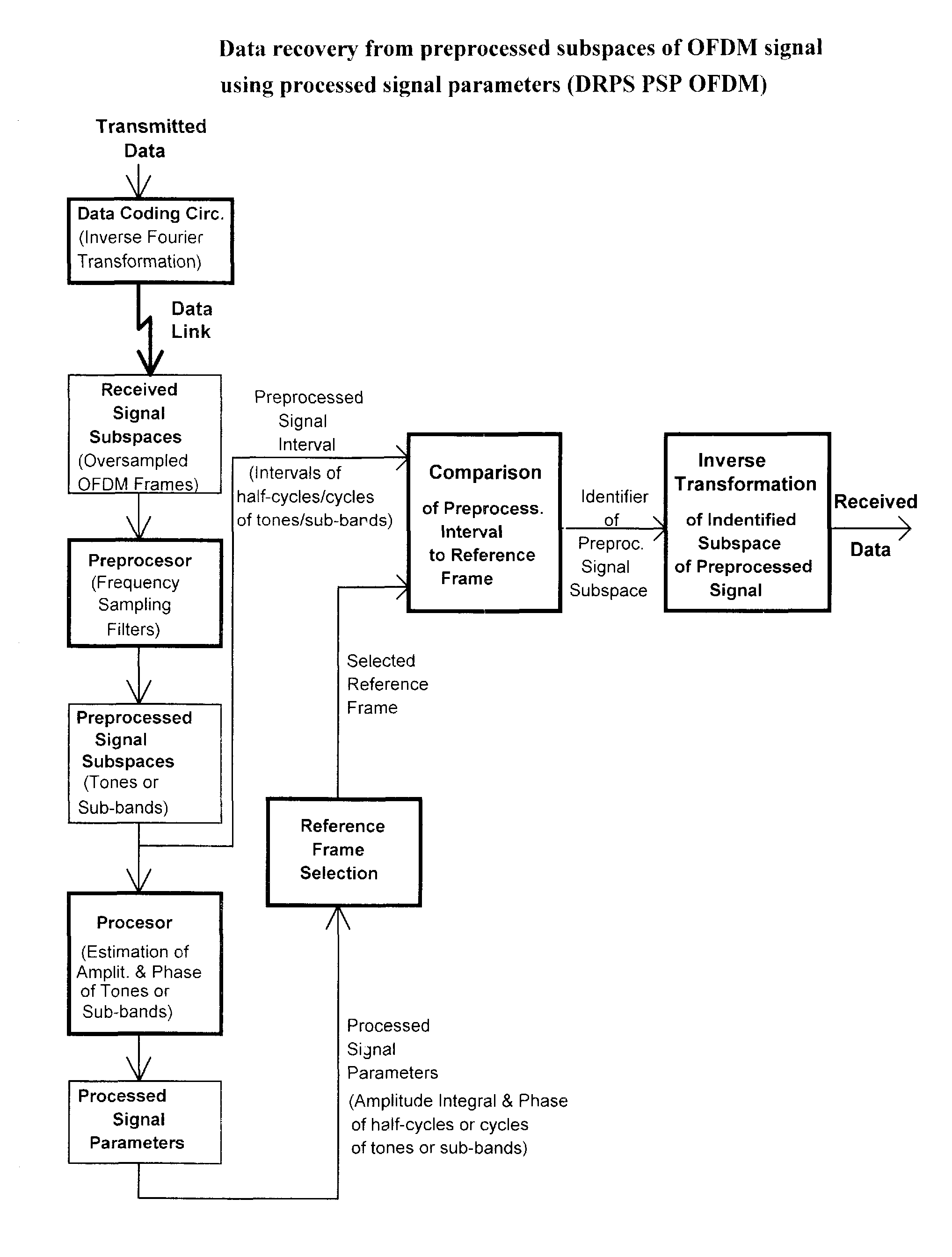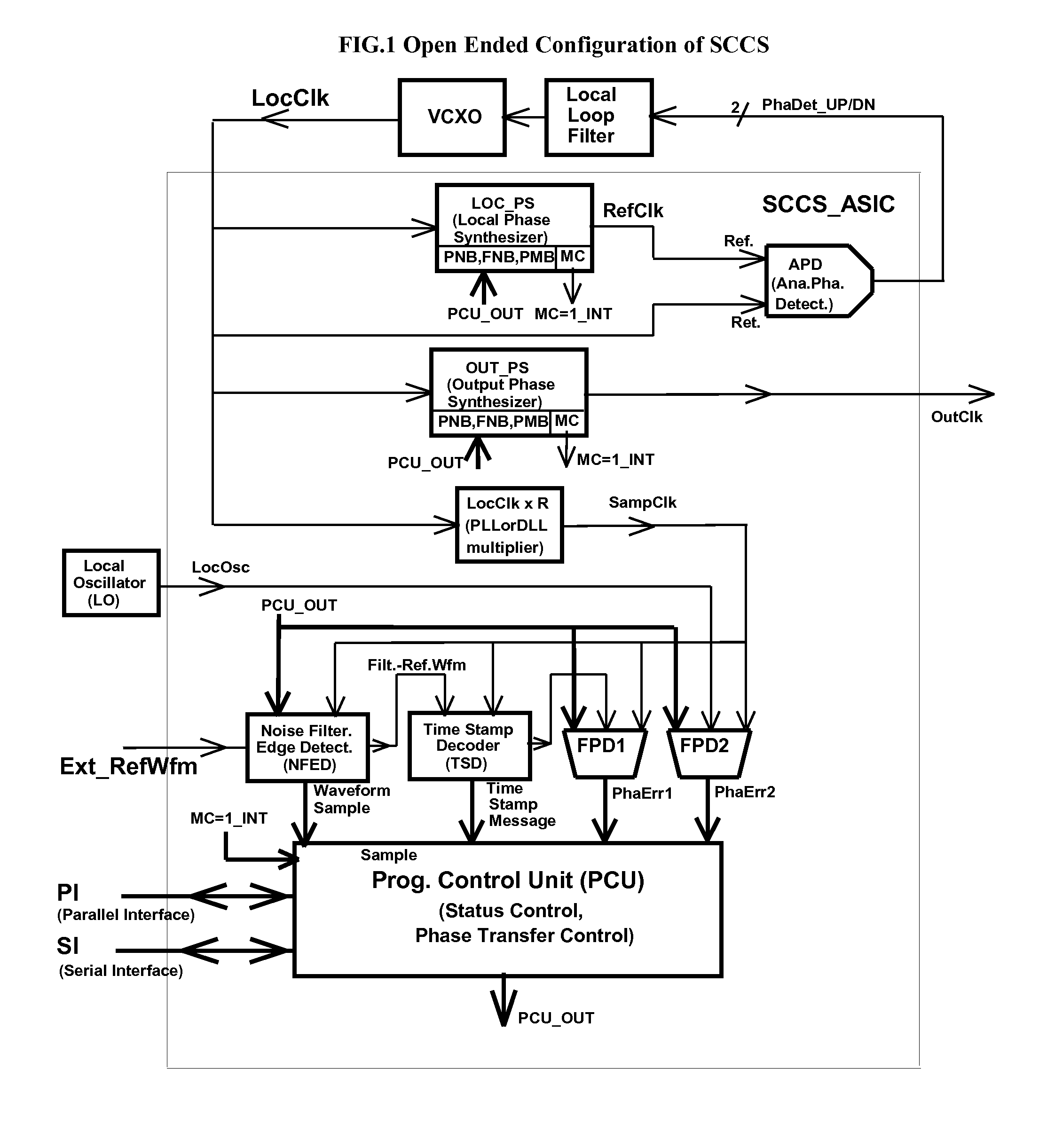Inverse signal transformation
a signal transformation and signal technology, applied in the field of inverse signal transformation, can solve the problems of inherently unstable dplls, highly unpredictable time delay variations, and many applications, and achieve the effects of high unreliability of conventional dppl configurations and inherently unstable dplls
- Summary
- Abstract
- Description
- Claims
- Application Information
AI Technical Summary
Benefits of technology
Problems solved by technology
Method used
Image
Examples
Embodiment Construction
[1054]1. Embodiments of NFIT
[1055]The Inverse Transformation Method (ITM) is introduced in FIG. 23 as including subsystems shown in blocks 1-7.
[1056]These subsystems enable an efficient low-power processing of high-speed oversampled data is enabled by implementing real-time processing units (RTPs) which use simplified algorithms based on variable coefficients.
[1057]These RTPs are controlled by a Programmable Control Unit (PCU) which performs a background processing. This background processing includes implementing adaptive non-linear algorithms which analyze received line signal and intermediate processing results, in order to define such coefficients and to download them to content addressed memories such as the Control Register Set for 129 Tone (mentioned further below as 129T_CRS occurring in FIG. 26, FIG. 28 and FIG. 29).
[1058]These memories are accessed by the RTPs implementing said ITM outlined in FIG. 23. These RTPs can be implemented as it is detailed below for 129 Tone of D...
PUM
 Login to View More
Login to View More Abstract
Description
Claims
Application Information
 Login to View More
Login to View More - R&D
- Intellectual Property
- Life Sciences
- Materials
- Tech Scout
- Unparalleled Data Quality
- Higher Quality Content
- 60% Fewer Hallucinations
Browse by: Latest US Patents, China's latest patents, Technical Efficacy Thesaurus, Application Domain, Technology Topic, Popular Technical Reports.
© 2025 PatSnap. All rights reserved.Legal|Privacy policy|Modern Slavery Act Transparency Statement|Sitemap|About US| Contact US: help@patsnap.com



